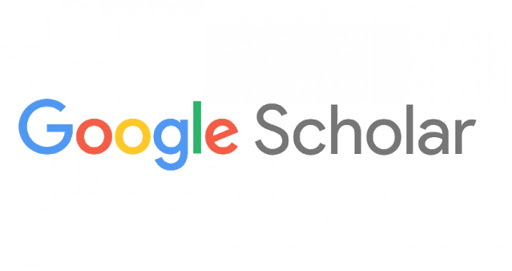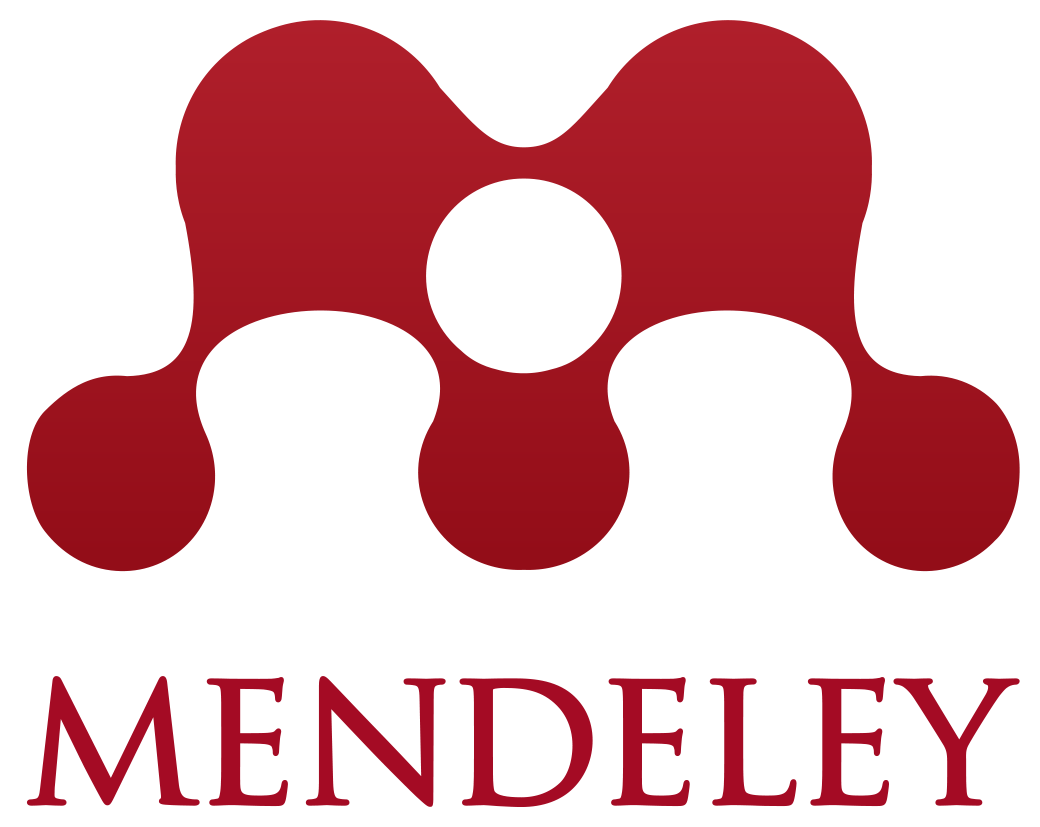
This work is licensed under a Creative Commons Attribution-NonCommercial 4.0 International License.
Authors who publish with this journal agree to the following terms:
- Authors retain copyright and grant the journal right of first publication with the work simultaneously licensed under a Creative Commons Attribution Non-Commercial License that allows others to share the work with an acknowledgement of the work's authorship and initial publication in this journal.
- Authors are able to enter into separate, additional contractual arrangements for the non-exclusive distribution of the journal's published version of the work (e.g., post it to an institutional repository or publish it in a book), with an acknowledgement of its initial publication in this journal.
- Authors are permitted and encouraged to post their work online (e.g., in institutional repositories or on their website) prior to and during the submission process, as it can lead to productive exchanges, as well as earlier and greater citation of published work (See The Effect of Open Access).
Abstract
For the first time in the literature, through a qualitative and documentary research approach employing a systematic and inductive method, this article addresses the interaction between Colombian copyright and related rights in light of the new realities brought by generative artificial intelligence (AI) in the music industry. These include the autonomous generation of musical works, performances and phonograms, as well as the imitation of musical styles and singers' voices. This article concludes that, under Colombian copyright legislation: (1) musical works entirely generated by artificial intelligence do not have a protected author, and AI-generated performances are not protected by related rights; however, phonograms generated by AI may receive protection; (2) creating works through an AI algorithm based on existing works, via data mining process, does not constitute an infringement, provided it falls within the exceptions for private domain and temporary copies; (3) finally, the imitation of styles and artists' voices by AI is not protected under copyright or related rights. However, given the rapid and constant evolution of this technology, ongoing monitoring and adaptation by copyright are necessary.

References
Abbott, Ryan y Alex Sarch. “Punishing Artificial Intelligence: Legal Fiction or Science Fiction”. University of California, Davis Law Review 53 (2019): 323-84.https://doi.org/10.2139/ssrn.3327485
Alemania, Ministerio Federal de Justicia. Act on Copyright and Related Rights (Copyright Act, as amended up to Act of June 23, 2021).
https://www.wipo.int/wipolex/es/text/586964
Aquino, Lúcia Souza d’ y Saulo Bichara Mendonça. “www.direitos autorais do professor online.com”. civilistica.com 12, núm. 1 (2023): 1-16.
Arango Archila, Fabián. “El impacto de la tecnología digital en la industria discográfica”. Dixit 24, núm. 1 (2016): 36-50. https://doi.org/10.22235/d.v0i24.1168
Bisbe. “La IA viral que imita voces de cantantes como Eminem o Nicki Minaj para crear canciones con ellas”. La Vanguardia, 26 de enero de 2023 https://www.lavanguardia.com/cribeo/viral/20230126/8710334/conoce-uberduckia-viral-imita-voces-cantantes-puedes-seleccionar-texto.html
Boryczka, Urszula, Mariusz Boryczka, y Paweł Chmielarski. “ACO and generative art – artificial music”. Procedia Computer Science, 27th International Conference on Knowledge Based and Intelligent Information and Engineering Systems (KES 2023), vol. 225 (2023):
-33. https://doi.org/10.1016/j.procs.2023.10.254
Bulayenko, Oleksandr, João Pedro Quintais, Daniel J. Gervais y Joost Poort. “AI Music Outputs: Challenges to the Copyright Legal Framework”. SSRN Electronic Journal, febrero de 2022. https://doi.org/10.2139/SSRN.4072806
Carroll, Michael W. “Copyright and the Progress of Science: Why Text and Data Mining Is Lawful”. University of California, Davis Law Review 53 (s. f.): 893-964.
Civit, Miguel, Javier Civit-Masot, Francisco Cuadrado y Maria J. Escalona. “A Systematic Review of Artificial Intelligence-Based Music Generation: Scope, Applications, and Future Trends”. Expert Systems with Applications 209 (2022): 118-190.
https://doi.org/10.1016/j.eswa.2022.118190.
Coca Payeras, Miguel. “Las iniciativas de la Unión Europea sobre inteligencia artificial: de la persona electrónica al difícil equilibrio entre la necesidad de impulsarla y evitar sus riesgos”. Revista de Derecho Civil 10, núm. 2 (2023): 3-40.
Colombia, Congreso de la República. Sobre derechos de autor, Ley 23 del 28 de enero de 1982. DO 35949.
https://www.funcionpublica.gov.co/eva/gestornormativo/norma.php?i=3431
Comisión del Acuerdo de Cartagena. “Decisión 351:Régimen Común sobre Derecho de Autor y Derechos Conexos”. Diciembre de 1993, art. 3.
Coote, Jonathan y Don McCombie. “AI-Generated Music and Copyright”. Intellectual Property Talking Tech, Clifford Chance, (2023).
Coto-Jiménez, Marvin. “Inteligencia artificial en la creación musical”. ContactoS 92 (2014): 33-36.
Dash, Lipsa, Sambhabi Patnaik, Saranya Dash y Silpalika Biswal. “Inteligencia colaborativa y propiedad intelectual: humanos y humanoides en el contexto del sistema sanitario”. Novum Jus 15, núm. especial (2021): 103-26. https://doi.org/DOI: 10.14718/NovumJus.2021.15.E.10
Duque Lizarralde, Marta, y Christofer Meinecke. “AI Music Outputs”. 89.
Duque Lizarralde, Marta, y Christofer Meinecke. “Authorless AI-assisted productions: Recent developments impacting their protection in the European Union”. JIPITEC 14, núm. 1 (2023). http://www.jipitec.eu/issues/jipitec-14-1-2023/5709
España, Ministerio de cultura, Boletín Oficial del Estado (BOE) núm. 97, del 22 de abril de 1996. https://www.boe.es/boe/dias/1996/04/22/index.php
España, Tribunal Supremo, Sala 2a, Recurso de Casación contra sentencia dictada por la Audiencia Provincial de Barcelona. 14 de febrero de 1984.
Fernández, Yubal. “MusicGen: qué es, cómo funciona y cómo usar este creador de música a partir de texto por inteligencia artificial”. Xataca Basics, s. f. https://www.xataka.com/basics/musicgen-que-como-funciona-como-usar-este-creadormusica-a-partir-texto-inteligencia-artificial
Flynn, Sean, Luca Schirru, Michael Palmedo y Andrés Izquierdo. “Research Exceptions in Comparative Copyright”. Joint PIJIP/TLS Research Paper Series, (2022). https://digitalcommons.wcl.american.edu/research/75
“Free Online Mastering Previews - No Signup Required | LANDR”. https://app.landr.com, consultado el 21 de agosto de 2023
Futurepedia. “Futurepedia - The Largest AI Tools Directory | Home”. Consultado el 21 de agosto de 2023. https://www.futurepedia.io/
Ghosh, Rima, Jayanta Ghosh y Pinaki Ghosh. “Copyright Infringement and Exemption Clause on Indian Copyright Law: Issues and Challenges”. Journal of Intellectual Property Rights (JIPR) 29, núm. 1 (2024): 43-49. https://doi.org/10.56042/jipr.v29i1.872
Haase, Jennifer y Paul H.P. Hanel. “Artificial Muses: Generative Artificial Intelligence Chatbots Have Risen to Human-Level Creativity”. Journal of Creativity 33, núm. 3 (2023): 100066. https://doi.org/10.1016/j.yjoc.2023.100066.
Habib, Sabrina, Thomas Vogel, Xiao Anli y Evelyn Thorne. “How Does Generative Artificial Intelligence Impact Student Creativity?”. Journal of Creativity 34, núm. 1 (abril de 2024): 100072. https://doi.org/10.1016/j.yjoc.2023.100072
Han, Jiawei y Micheline Kamber. Data mining: concepts and techniques. 3ra ed. Burlington, MA: Elsevier, 2012.
Hernández Paredes, Patricia. “Derecho de Autor”. En Manual de Propiedad Intelectual, editado por Eduardo Varela Pezzano, 91-108. Bogotá: Cavelier Abogados, 2015.
Hernández Ruza, Julia. “YouTube permitirá que los sellos discográficos eliminen los clones de voz hechos con IA”. Industriamusical.com
Japón, Dieta (parlamento japonés). Copyright Act, 1970 (Act No. 48 of May 6, 1970, as amended up to Act No. 72 of July 13, 2018).
https://www.cric.or.jp/english/clj/doc/20210624_law.pdf
Jiménez Cardona, Noemí. “El ‘uso transformador’ de las empresas de IA: entre la libertad creativa y los derechos de propiedad intelectual”. IDP. Revista de Internet, Derecho y Política, núm. 40 (2024): 1-11. https://doi.org/10.7238/idp.v0i40.421926
K., Hema. “Protection of Artificial Intelligence Autonomously Generated Works under the Copyright Act, 1957- An Analytical Study”. Journal of Intellectual Property Rights (JIPR)28, núm. 3 (2023): 193-99. https://doi.org/10.56042/jipr.v28i3.708.
LatinNow. “Homero Simpson - La Gata Bajo La Lluvia (Letra/Lyrics) AI Cover - YouTube”. Video de YouTube, mayo de 2023. https://www.youtube.com/watch?v=yUPPmIz2ZAs
Li, Phoebe, Robin Williams, Stephen Gilbert y Stuart Anderson. “Regulating Artificial Intelligence and Machine Learning-Enabled Medical Devices in Europe and the United Kingdom”. Law, Technology and Humans 5, núm. 2 (2023): 94-113. https://doi.org/10.5204/lthj.3073
Li, Yanghuan, Jinhui Wei, Junbin Yuan, Qingzhen Xu y Chengying He. “A Decentralized Music Copyright Operation Management System Based On Blockchain Technology”. Procedia Computer Science 187 (2021): 458-63. https://doi.org/10.1016/j.procs.2021.04.084.
Lipszyc, Delia. Derechos de autor y Derechos conexos. Chile: CERLALC, 1993.
Margoni, Thomas y Martin Kretschmer. “A Deeper Look into the EU Text and Data Mining Exceptions: Harmonisation, Data Ownership, and the Future of Technology”. GRUR International 71, núm. 8 (28 de julio de 2022). https://doi.org/10.1093/grurint/ikac054
Monroy Rodríguez, Juan Carlos. Derecho de Autor y Derechos conexos. Primera. RRA FORMACIÓN, 2013.
Muñoz Ferrandis, Carlos y Marta Duque Lizarralde. “Open sourcing AI: intellectual property at the service of platform leadership”. JIPITEC 13, núm. 3 (2022). https://doi.org/10.1039/D1NR90057A
Navarro, Susana Navas. “Obras generadas por algoritmos”. Revista de Derecho Civil V, núm. 2 (2018): 273-91.
Niño Hernández, Fanny Patricia, Marlon Antonio Benítez Vargas y Laura Rico Duarte. “El desafío que representan las obras creadas por inteligencia artificial al derecho de autor en Colombia”. IDP. Revista de Internet, Derecho y Política, núm. 38 (2023): 1-13.
https://doi.org/10.7238/idp.v0i38.403977.
Nowak-Gruca, Aleksandra. “Could an Artificial Intelligence Be a Ghostwriter?”. Journal of Intellectual Property Rights (JIPR) 27, núm. 1 (2022): 25-37. https://doi.org/10.56042/jipr.v27i1.51259
Oyague, Olenka Woolcott y Germán Flórez Acero. Protección del derecho de autor. AstreaUniversidad Católica de Colombia, 2015.
Palacio Puerta, Marcela. “Los artistas colombianos y las plataformas de música digitales: algunas dificultades”. Revista de Derecho Privado, núm. 33 (2017): 111-33. https://doi.org/10.18601/01234366.n33.05
Pastor, Javier. “Una IA ha creado una canción de Drake y The Weeknd. El problema para la industria es que es buena”. Xataca, abril de 2023. https://www.xataka.com/robotica-e-ia/ia-ha-creado-cancion-drake-the-weekndproblema-para-industria-que-buena
Rao, Bharat. “The Internet and the Revolution in Distribution: A Cross-Industry Examination”. Technology in Society 21, núm. 3 (1999): 287-306. https://doi.org/10.1016/S0160-791X(99)00018-4.
Ricardo, Jesús Estupiñán, Maikel Yelandi Leyva Vázquez, Alex Javier Peñafiel Palacios y Yusef El Assafiri Ojeda. “Inteligencia artificial y propiedad intelectual”. Revista Universidad y Sociedad 13, núm. S3 (2021): 362-68.
Ríos Ruiz, Wilson Rafael. “Los sistemas de inteligencia artificial y la propiedad intelectual de las obras creadas, producidas o generadas mediante ordenador”. Revista La Propiedad Inmaterial, núm. 3 (2001): 4-14.
Sag, Matthew. “The New Legal Landscape for Text Mining and Machine Learning”. Journal of the Copyright Society of the U.S.A. 66 (2019): 291.https://doi.org/10.2139/ssrn.3331606
Saiz García, Concepción. “Las obras creadas por sistemas de inteligencia artificial y su protección por el derecho de autor”. InDret 1 (2019): 7. https://dialnet.unirioja.es/servlet/articulo?codigo=6831598
Samuel, Annamma y Rachel Florence James. “The Interplay between Contemporary Art and Copyright Law”. Journal of Intellectual Property Rights (JIPR) 28, núm. 6 (2023): 489-99. https://doi.org/10.56042/jipr.v28i6.1518
Shtefan, Anna. “Creations of artificial intelligence: In search of the legal protection regime”. JIPITEC 14, núm. 1 (2023). http://www.jipitec.eu/issues/jipitec-14-1-2023/5710.
Singapur, Asamblea Legislativa. Copyright Act 2021 (Revised Edition 2020, Act No. 22 of 2021). https://wipolex-res.wipo.int/edocs/lexdocs/laws/en/sg/sg175en.pdf
Sopilko, Iryna, Valeriia Filinovych, Liliia O. Pankova, Serhii V. Obshalov y Kostiantyn O. Chaplynskyi. “Protection of Intellectual Property Rights from Cyber Threats in the Global Information Environment”. Novum Jus 17, núm. 1 (2023): 237-58.
https://doi.org/10.14718/NovumJus.2023.17.1.10
Soriano Arnanz, Alba. “Creating non-discriminatory Artificial Intelligence systems: balancing the tensions between code granularity and the general nature of legal rules”. IDP. Revista de Internet, Derecho y Política, núm. 38 (2023): 1-12.
https://doi.org/10.7238/idp.v0i38.403794
Sturm, Bob L. T., Maria Iglesias, Oded Ben-Tal, Marius Miron y Emilia Gómez. “Artificial Intelligence and Music: Open Questions of Copyright Law and Engineering Praxis”. Arts 8, núm. 3 (2019): 115. https://doi.org/10.3390/arts8030115.
Sunray, Eric. “Sounds of Science: Copyright Infringement in AI Music Generator Outputs”. Catholic University Journal of Law and Technology 29, núm. 2 (2021). https://scholarship.law.edu/jlt/vol29/iss2/9.
“Tratados administrados por la OMPI, Partes contratantes, Tratado de la OMPI sobre Interpretación o Ejecución y Fonogramas”. consultado el 10 de noviembre de 2023. https://www.wipo.int/wipolex/es/treaties/ShowResults?search_what=C&treaty_id=20
Trujillo Cabrera, Carlos. “El derecho a la propia imagen (y a la voz) frente a la inteligencia artificial”. InDret, núm. 1 (2024): 74-113. https://doi.org/10.31009/InDret.2024.i1.02
Utkina, Maryna, Olha Bondarenko, Tamara Chernadchuk y Oleksandr Chernadchuk. “Intellectual Property Rights on Objects Created by Artificial Intelligence”. Law, State and Telecommunications Review 15, núm. 1 (2023): 85-105. https://doi.org/10.26512/lstr.v15i1.41729.
Vásquez Leal, Luis. “¿Autoría algorítmica? Consideraciones sobre la autoría de las obras generadas por inteligencia artificial”. Revista Iberoamericana de la Propiedad Intelectual13, (2020): 207-33. https://doi.org/10.26422/RIPI.2020.1300.vas




















